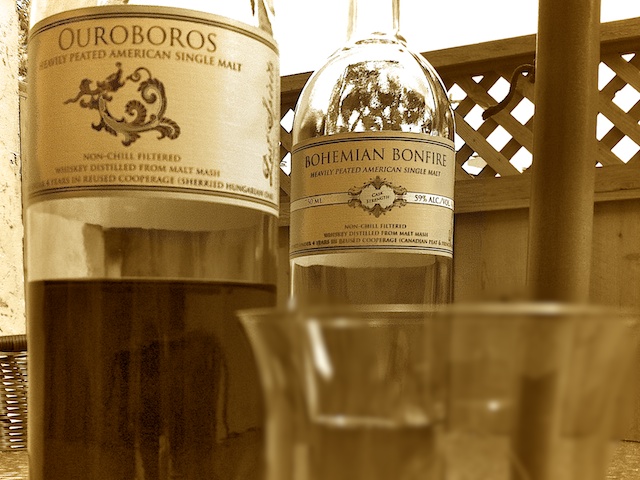Whisky as Art

While I was holed up in the Standard hotel a few weeks back, I lay in my bed, watching the Art House channel on repeat, catching the ten minutes or so I had missed from each portion of the Jean-Michel Basquiat documentary that had been on a 24-hour repeat loop. Listening to his early patrons talk about his ability, but his difficulty in breaking through to the mainstream New York modern art scene, I was reminded quite a bit of Bryan Davis and his Lost Spirits single malt whiskies. Namely, the fact that Basquiat's work was originally considered crude, rough around the edges, and primative. Then Warhol embraced him, he showed up in a few exhibits, and suddenly his paintings were cutting edge. Today, Basquiat's paintings sell for tens of millions of dollars and are some of the most coveted by art collectors everywhere.
One day Basquiat is a street kid playing around with paint. the next day his paintings are worth millions. His art didn't necessarily improve, or change, or get better, it's just that the public perception of art caught up to where he was already at. This type of phenomenon can happen when people don't understand the nature of what a particular artist is doing, especially if it doesn't match up with what they're used to. That's called being ahead of one's time. For example:
This is a self portrait painted by Basquiat.
This is a self portrait painted by Cezanne.
The Cezanne is what many people traditionally think of think of as a classic painted portrait – so romantic and rustic in its own post-Impressionist way. Can you imagine being an art collector in the early 80s and being told that you should buy the Basquiat painting instead of the Cezanne? They'd have said, "You're out of your freakin' mind!" The Basquiat looks like a cave version of street graffiti in comparison, yet today is recognized as a masterpiece of its own particular asthetic.
In a similar scenario, the people who have criticized Bryan Davis's whiskies usually do so in comparison to other peated whiskies, a la Ardbeg or Laphroaig. "I'd rather drink Lagavulin for that price," they say. Fair enough. Some people would rather look at a Monet exhibit than a Jackson Pollock display. However, much like I wouldn't compare Cezanne to Basquiat, I wouldn't compare the Lost Spirit whiskies to anything from Islay. Or Scotland, for that matter. Sure, they're both distilling barley flavored with peat, just like Cezanne and Basquiat are both using a canvas with paint and brushes. But while Scottish distilleries are producing a classic style of whisky, based on hundreds of years of tradition, Bryan Davis is creating an entirely new genre. The more I taste them, the more I'm convinced that they need to be judged completely on their own context.
Of course, saying that someone is "ahead of his time" is an easy way to deflect criticism when it's aimed at ability and talent. Sometimes an artist isn't ahead of his or her time, they're simply not all that good. I don't think that's the case with Bryan Davis, however. Every time I taste a new whiskey from him it's better than it was previously. And he's getting more creative, more ambitious.
Maybe his whiskies are a little rough around the edges and primitive. But maybe that's the direction we're going with American single malt and maybe Brian is paving the way.
It's too early to tell right now, but there are a lot of people who appreciate his whiskies already and recognize his talent.
-David Driscoll


